Do you know which is the first municipality in Spain?. Well, it is Brañosera (in the province of Palencia, in the region of the Montaña Palentina, Community of Castile and León, to the south of the Sierra de Hijar).
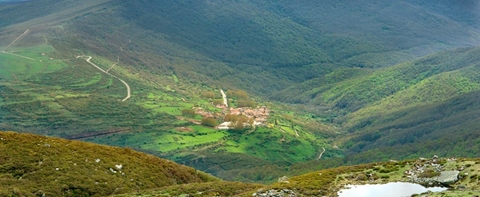

 (1) a 40 mm.jpg)
Brañosera

The Council of Brañosera
The Sierra de Hijar has a tableland named Sierra of Peña Labra.

Sierra de Hijar with tableland Peña Labra

Peña Labra (on the left side of the image)
It is considered the first council of Spain, when they gave the first “carta puebla” (“municipal charter”), (then still part of the Kingdom of Asturias), in 824.
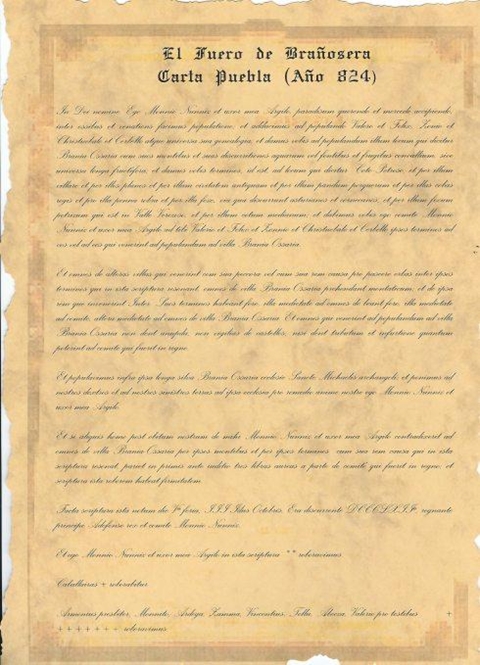
The Municipal Charter
It is one of the towns of the Camino de Santiago (Road to Santiago), in the north of Spain: Route of the Besaya (Among Santander and Carrión de los Condes –to the North of the province of Palencia--).Brañosera is 118 kilometres from Santander.
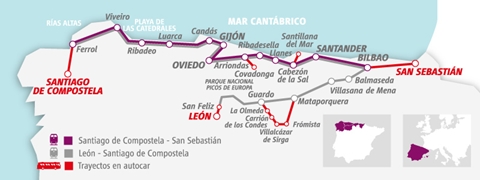
Santander to Carrion de los Condes
Brañosera is included in the called “Montaña Palentina” (Mountain of Palencia), inside the Natural Park of Carriona Springs and Copper-Mountain of Palencia Spring, and dominated by the buttresses of the Sierra de Hijar, the Valdecebollas massif. The Rubagón river, which irrigates the municipal boundary of Brañosera, born in these mounts. It is surrounded by forests of beech, oak, holly and yew.

Valdecebollas, 2,139 mts high (On the right side of the image)
Most likely, according to studies, conducted by historians from Santander, and as noted by the Charter of Brañosera, the mythical Celtiberian city of Vadinia is located in its limits; Vadinia, that was a Cantabrian bastion, in the resistance against the Roman Empire.
There is a place, where vast forests are covering the slopes of stunning mountains, that rise majestically.
It is the area of Leon-Asturian mountains, a place full of myths, legends, old customs that are rooted, in the oldest thing of tradition, of villages where they seem to have stopped time, with kind and wise people, willing to chat with traveler and convey all their cultural legacy of centuries, of stunning scenery, attractive, bewitching, full of an ancient magic and beauty, that inevitably catch traveler.
Its location, halfway between the northeast of Leon, the east of Asturias and even the western Cantabria, tells us about its past, linked to a tribe of Cantabrian origin: the Vadinienses (people from Vadinia).
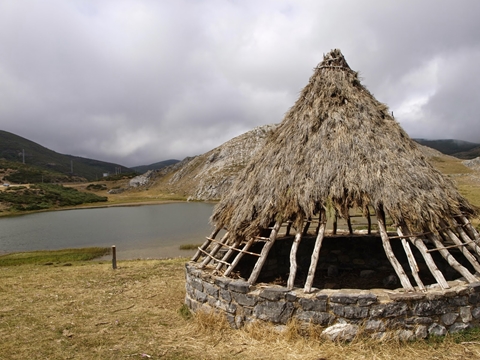
A hut for people from Vadinia on the Isoba Lake
According to historian Ptolemy, this tribe would be part of one of the 8 "civitates", in the Cantabrian nation was divided, the Vadinienses would be formed by four clans: the Arcaedunos, the Aroniaecinos, the Cantianos and Corovescos. Its specific location is a mystery, placing them, according to many authors, in the area of the current village of Buron, others in Cangas de Onis and others place them in Crémenes; the only evidence, that we have, are the multiple steles appeared, in several villages in the area, Vadiniense indisputably origin, dating to the third Century Before Christ.
Its distribution was on both sides of the Cantabrian mountain range; to the north, they stretched across the lands of Ponga and Sella, reaching the Cantabrian Sea; to the south of the mountain range, its territory included the lands of Leon Eastern mountain to a little bit below Cistierna; on the East, the Carrión river closed the territory and, on west, the top of the Porma, near Puebla de Lillo, and the beautiful lake Isoba.

The Isoba Lake
Their culture was eminently based on forts, and matriarchal; its main city would be Vadinia, whose exact location is unknown, there are no many remains of forts from Vadinia preserved, or they are not excavated, as an example we have of Castitejón, near Isoba.
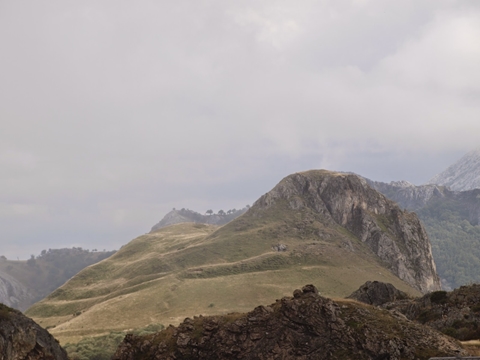
Fort of Castitejón
After the Cantabrian Wars, there was no record of activity, in the area, until the repopulation, in the ninth century. It is then that it was necessary to colonize the lands of the Plateau, to supply the emerging number of Christians, who lived in the mountains of northern Hispania. The borders, on the Duero (river), were set and kings, bishops, followed by settlers and serfs, moved to these lands, to establish the boundaries of a civilization, rise and expansion. These places lacked natural defenses, so it was necessary to create, on hills and mountains, castles with a mainly defensive role. The counties were dominated by a 'Come "(Count), who got this title for his victories against the Muslims. It is believed that the founder of Castile, having conquered the lands of the Arabs, was Rodrigo of Castile, and later became Fernan Gonzalez, who according to tradition, he got the independence of the County of Castile.
That was how the foramontanos (people from the north of the Iberian Peninsula, with which, in the ninth century, repopulated El Bierzo and lands to the north of the plateau of the Duero, which were empty because of the wars between the Muslims and the Kingdom of Asturias) of Malacoria came from inside Cantabria. Following the birth of the Ebro, they penetrate in territory of "high brañas (braña is an area of the Cantabrian mountain range, where cattle can graze) and bears", that give the name to the place. These formed the council of Brañosera, covered by the Municipal Charter, granted by the Count, Munio Núñez, and his wife, Argilo.
In 824, Alfonso II of Asturias reigned. In those days, Munio Núñez was the Count of Brañosera lands.
For a century, the Peninsula lived the Arab invasion. This had caused the flight of Christians, to the north, and many of them, those who did not perish along the way, they came to take refuge in asturian lands, lands which immediately began to suffer overcrowding. Famine began to vent its rage on these "exiled" and they began the flight, in search of a better life. And they arrived Brañosera, until Brannia-Ossaria, brañas and bears lands.
Precisely, to organize the repopulation, Munio Núñez granted the Municipal Charter, to his subjects, endowing them with rights. He granted the free use of all, in the valley, with only two conditions: to give a part of that use, whom would come to populate the valley; and pay to the Count half the pay, that should be collected to the nearby villages, that had grazed their cattle in these areas. In return, the inhabitants of Braña-Osaria would be exempt from military surveillance and service in the nearby castles.
Thus it was born the Charter of Brañosera, the first Municipal Charter, dated October 13, 824, formally it constitutes the first local admistrative organization, the germ of current councils.
Well, I hope that you have liked this post.
Until my next article, kind regards,
Luis.
Sponsored by Costaluz Lawyers.
Please click below:
